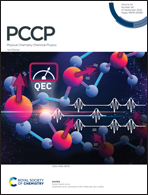Computational investigation of the increased virulence and pathogenesis of SARS-CoV-2 lineage B.1.1.7†
Abstract
New variants of SARS-CoV-2 are being reported worldwide. The World Health Organization has reported Alpha (B.1.1.7), Beta (B.1.351), Gamma (P.1), Delta (B.1.617.2) and Omicron (B.1.1.529) as the variants of concern. There are speculations that the variants might evade the host immune responses induced by currently available vaccines and develop resistance to drugs under consideration. The first step of viral infection in COVID-19 occurs through the interaction of the spike protein's receptor-binding domain (RBD) with the peptidase domain of the human ACE-2 (hACE-2) receptor. This study aims to get a molecular-level understanding of the mechanism behind the increased infection rate in the alpha variant. We have computationally studied the spike protein interaction in both the wild-type and B.1.1.7 variant with the hACE-2 receptor using molecular dynamics and MM-GBSA based binding free energy calculations. The binding free energy difference shows that the mutant variant of the spike protein has increased binding affinity for the hACE-2 receptor (i.e. ΔG(N501Y,A570D) is in the range −7.2 to −7.6 kcal mol−1) and the results were validated using Density functional theory. We demonstrate that with the use of state-of-the-art computational approaches, we can, in advance, predict the virulent nature of variants of SARS-CoV-2 and alert the world healthcare system.



 Please wait while we load your content...
Please wait while we load your content...